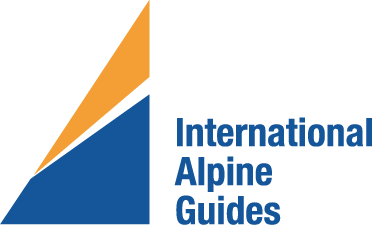Freeride Skiing in the Alps – What is it?
/Freeride is primarily lift served “backcountry” skiing with perhaps short bits of hiking and skinning. We sometimes call it “side country” skiing in the US. But in the Alps, it might be more accurate to just label it “the rest of the country”. The ski terrain in the Alps is simply massive and that includes the backcountry ski terrain that can be found off of the extensive lift networks. In Europe you could say that there are not so much ski resorts with exact boundaries, there are just lifts. And they can get you quickly into some amazing ski terrain.
Off piste on a 4000 ft powder run in Engelberg, Switzerland
The selection of off-piste terrain that is accessible from the lifts can many times be more extensive than the on-piste, or groomed and controlled, terrain. It can be somewhat compared to Heli skiing off a lift (and yes, in many Alps countries they have Heli ski access also). The ski gear for freeride are the skis you want to ski. We’re talking the big skis of 105mm under foot or wider, beefy touring bindings and supportive 4 buckle touring boots. Split boards can do very well (sometimes better) in freeride terrain.
One way to describe freeride skiing is that it is what most skiers who come to the Alps from the US to go hut ski touring actually really want to do, but they just don’t know it. Yes, the alpine huts in Europe are amazing and the ski touring from point A to B can be through some of most spectacular terrain on the planet. But hut to hut ski touring is really about moving from, well, hut to hut. Freeride is all about big descents with big skis and searching out the best snow.
Dropping into a chute in the Dolomites of Italy
A freeride day can entail riding two gondolas and a cable car to the top first thing in the morning, ducking the rope and dropping 6200 feet down lightly tracked chutes and bowls into a far valley. After a quick latte or delicious Weiner schnitzel at a remote chalet, you catch a bus back to the base lift. Then back up, perhaps a short 30 min skin and there you are at another powder stash that only a few have been to all day.
Afternoon fresh tracks under the Gondola in Engelberg
Or, you might just be lapping up untracked fresh powder just a few minutes traverse from the lift at 1pm (yes, 1pm). You see, at many Alps ski resorts most people do not come to ski the off-piste ungroomed terrain. They have their short carving skis and are content to ski the groomers all day long and don’t even consider the foot of powder 20 feet off to their right under the rope to even be an viable option. That leaves the fresh tracks for the minority of us.
Back up you go again to access that short 40-minute skin ascent that takes you to that far untracked ski run you saw the day before. Spitting you off at the base of a chairlift you get back on the piste run down into town, and of course to the inevitable après ski party.
Apres ski party in Alagna, Italy
Major freeride destinations in the Alps are Chamonix and La Grave in France, Verbier and Engelberg in Switzerland, Alagna and the Dolomites in Italy, and St. Anton in Austria… among many, many others. Even some small Alps ski hills (of which there are many) can have big freeride opportunities off their one or two lifts. The Alps literally has a lifetime’s worth of freeride skiing exploration.
Dropping in towards the Mer de glace in chamonix
How much does all this cost? Not that much, once you get yourself to Europe. A ski trip to to a European Alps ski resort costs far less than the equivalent in the United States. You can enjoy lift ticket prices that are a fraction of US tickets prices. A $40 (equivalent) lift pass is very common at the smaller resorts and even the larger famous resorts are commonly under $100 for the day. In the Dolomites of Italy, you can currently purchase a weekly Dolomiti Superski ticket for about $70 per day and that gives you access to over 450 lifts! Lodging options in the Alps are far more diverse than in the US with choices ranging from super cheap hostels to 5-star swank hotels. Food can be a bit more, but the quality of the average restaurant food in the Alps is far better.
mid morning cappuccino break in Alagna between couloirs
Freeride skiing is really the quintessential Alps skiing experience having all the elements of resort skiing, ski touring as well as occasionally ski mountaineering involving ropes and glacier skiing. Easy access to massive backcountry runs, backcountry huts and refugios with great lunch food and drink and at the endo of the day there’s always a lively apres ski spot…freeride skiing in the Alps is living the good life of backcountry skiing
Join International Alpine Guides Freeride and hut to hut sking in the Alps

















